TAGGED AS: Disney, Disney Plus, Marvel, marvel cinematic universe, marvel comics, Marvel Studios, Marvel Television, Superheroes, television, TV
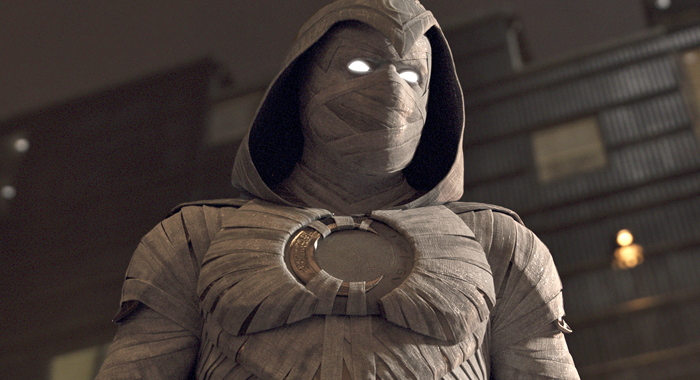
(Photo by ©Marvel Studios)
As hard as it may be to believe, Moon Knight is halfway through its first season. So far, it has revealed the conflict between Steven Grant (Oscar Isaac) and Marc Spector (also Isaac) as two personalities sharing one body. Complicating matters, Marc made an agreement with the Egyptian God Khonshu (voiced by F. Murray Abraham) to serve as his fist in exchange for some awesome powers and near-immortality.
Of course, that deal has a Faustian edge to it, as Khonshu directs his fist to undertake dubious missions, which absolutely scandalizes Steven every time he glimpses what Marc gets up to.
But three episodes into the series, how much do we know about Steven’s true reality? And are we even certain he’s the primary personality? Let’s take a look at Episodes 2 and 3 to discover what we know and, perhaps, discover what might await Steven and Marc in the latter half of the season.
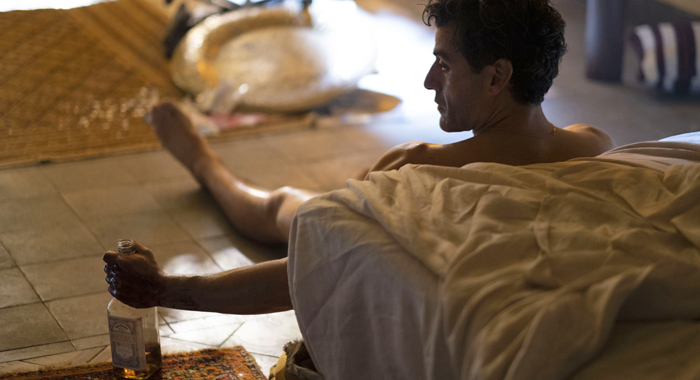
(Photo by Gabor Kotschy/©Marvel Studios)
As we mentioned a few weeks ago, the comic book Moon Knight has three major personas – mercenary Marc Spector, billionaire Steven Grant, and cabbie Jake Lockely. In the series, Steven emerges as a timid man who works in the British Museum gift ship. Marc, meanwhile, is an adventurer more like Indiana Jones than a Marvel superhero. But halfway into the series, Jake has yet to appear. Well, physically anyway.
Consider the moment early in Episode 3 when Marc awakens to discover he just killed one of Arthur Harrow’s (Ethan Hawke) agents. Both he and Steven quickly deny doing the deed; Jake is the most likely suspect. As we mentioned in our Episode 1 deep dive, the persona evolved in the comics as the amalgamation of Marc’s dark side. Every murder he committed as a mercenary proved to be Jake’s choice. When you look at Marc’s horror in the face of the last Harrow agent choosing to kill himself instead of revealing Harrow’s location, it is entirely possible a third persona takes control when lethal force comes into play. And for Marc to be unaware of it would alter his perception of the situation. Perhaps it may even force Marc and Steven to team up in order to deal with the darkest of their alters.
Also, considering Khonshu’s apparent zeal for murder, we imagine he prefers dealing with Jake the most.
But that does leave one intriguing question: Which of the personas is the primary? Since we’re introduced to Steven first, it is tempting to suggest he is the original. Over in the comics, Marc is indisputably the first persona, with the trauma leading to his Dissociative Identity Disorder ultimately revealed. So far, the television show leaves this question up in the air, though Harrow noting that Marc “doesn’t even know his own name” during the meeting of the Ennead offers one piece of evidence towards a new status quo for Moon Knight.
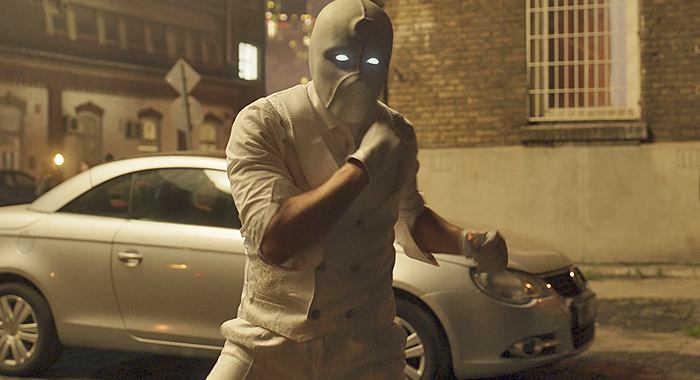
(Photo by ©Marvel Studios)
Speaking of new status quos, we love the way the “Mr. Knight” suit and Moon Knight cape differentiate Steven and Marc when either is in hero mode. To an extent, the manifestations of the suit seem to call to their aspirations. Marc wants to be a more conventional superhero while Steven desires to be respectable – or at least as respectable as one can be in an all-white suit.
Curiously, though, the Mr. Knight outfit has emerged in the comics as Marc’s attempt to hide from being Marc. Although not a full alter, it is yet another way he tries to deal with his troubled mind. It will be interesting if this comes into play in the television series and if the suits manifests in a different way should Jake ever appear.
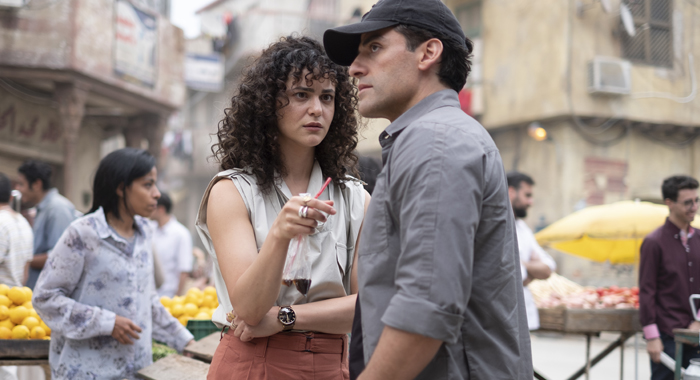
(Photo by Gabor Kotschy/©Marvel Studios)
Moon Knight is unique among the Marvel Studios films and television shows in a number of ways – but one of the most startling for readers of the comics is the way it abandons all of Moon Knight’s supporting characters. Take Doctor Strange, for example, which populates its cast with people like Wong (Benedict Wong) and Dr. Christine Palmer (Rachel McAdams) – characters familiar to readers as longtime associates of Stephen Strange (Benedict Cumberbatch). The same cannot be said for Moon Knight. Crawley (Shaun Scott) makes cameo appearances in the first two episodes, but faithful pilot Jean-Paul “Frenchie” Duchamp only appears as a single missed call on Marc’s phone, while longtime girlfriend Marlene is absent entirely.
Or is she?
In Episode 3, Layla El-Fouly (May Calamawy) makes a few references to her archeologist father. We subsequently learn he was killed under mysterious circumstances – which may or may not have led to Layla fleeing Egypt ten years ago – and Harrow points the finger at Marc in a later scene.
Back in the comics, Marlene’s father is an archeologist who is killed when a mercenary named Bushman comes upon his dig site. Marc, under the employ of Bushman, allows the murder to occur but subsequently stops Bushman’s goons from killing Marlene. He pays with his life and quickly makes the deal with Khonshu to become his fist. She is a key part of the lore, and though some runs of Moon Knight comics can go without her, she always resurfaces.
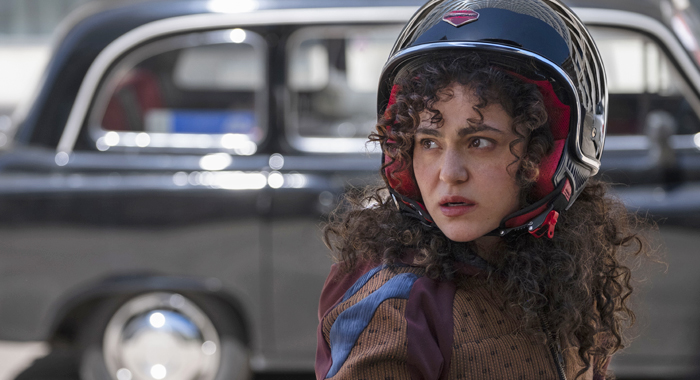
(Photo by Csaba Aknay/©Marvel Studios)
Provided Harrow is using the truth as his greatest weapon, then Marc (or was it Jake?) either murdered Layla’s father or allowed him to be killed. Either way, he’s holding something back from her about a night that was clearly formative in their lives. But that also leads to a couple of questions about Layla: was she there, and is “Layla” a persona that emerged in the wake of what transpired? In the comics, Marlene’s decision to stick with Marc after those traumatic events has always been one of the oddest things about her. Discovering she developed an alter in order to process being involved with her father’s (potential) murderer is, at least, one way to explain it.
Of course, we may be getting ahead of ourselves. From Layla’s statements, it sounds like she wasn’t even in the same country when her father was killed. Conversely, though, “Layla El-Fouly” is the name on her forged passport, which suggests it is, at the very least, a cover she uses in lieu of her real name. So despite the admonishment she gives Marc for not telling the whole truth, is she also holding something back?

(Photo by ©Marvel Studios)
Since Moon Knight has kept its reference to the Marvel Cinematic Universe at a minimum, we’d be remiss if we didn’t mention the shout-out to Madripoor in Episode 3. From the dialogue, it is clear Layla and Anton Mogart (Gaspar Ulliel) had a conflict in the famed city of criminals, which first deputed in the MCU during an episode of The Falcon and the Winter Soldier. As we noted when that series aired, Madripoor is most associated with X-Men. But considering what we’ve seen of the city-state so far, we can’t help but wonder if Layla’s attempts to return artifacts to their rightful owners has led her into the crosshairs of the Power Broker (Emily VanCamp). Although, we imagine the conflict with Mogart will have to be settled first – well, provided he survived his tussle with Moon Knight, of course. His last moment in Episode 3 is vague.
Also, it should be noted that Ulliel tragically passed away in a skiing incident in January.
No matter what becomes of Mogart, it is clear Layla’s activities as a reclaimer of artifacts could fuel future Moon Knight stories or bring both her and Moon Knight closer to the center of the MCU.

(Photo by ©Marvel Studios)
We have to admit, the depiction of Khonshu leaves us with a lot of questions. Despite power so immense he can cause an eclipse or turn back the night sky several thousand years, he is oddly bound to the rules of his pantheon. In fact, the meeting of the Ennead really casts him as something of a loser.
Or, at least, that impression emerges as they are completely unwilling to believe his accusations against Harrow. Why would that be? What could cause such a rift among the gods that they would take the word of an obviously suspect man? From the council meeting, we learn Khonshu was banished for staying involved in the affairs of men, but we also learn his concern for humanity comes with a streak of cruelty. That might be enough reason to doubt him. Add to that the concern for Marc’s well-being that the Ennead demonstrate and a picture begins to emerge. Khonshu may have a habit of picking ill people to serve as his Avatar, and who knows what sort of complications that can create?
Also, to turn back to the comics, Khonshu’s aims are not always benevolent, with the Avengers once battling the god after he decided to re-imagine the world in his own image. Is his attempt to keep Ammit entombed motivated by something more sinister than he’s led Marc to believe? That’s certainly possible. In fact, Episode 3 leaves us on a note that everything may be the fallout from Khonshu’s choices.
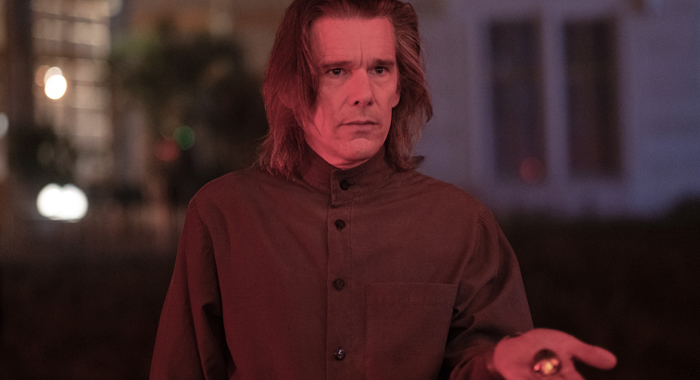
(Photo by ©Marvel Studios)
One of the most interesting ideas the show has introduced so far is Harrow’s former status as Khonshu’s Avatar. The mind reels at what this version of Moon Knight must’ve looked like. We do get an idea of how he behaved, though, as Harrow says he was “dealing out pain on Khonshu’s behalf.” The cruelty was part of the point, we think, and it adversely affected Harrow to such an extent that he wants Ammit to serve judgement on everyone.
To us, it suggests a very skewered altruism on Khonshu’s part. Perhaps he is the true villain of the piece and, should Ammit be freed, we may learn a startling truth about Moon Knight’s patron god. Will Marc and Steven (and Jake) be able to deal with whatever they discover? Or will it be a moot point with the god encased in stone?
![]() 86%
Moon Knight: Season 1
(2022)
episodes 1-3 are now streaming on Disney+.
86%
Moon Knight: Season 1
(2022)
episodes 1-3 are now streaming on Disney+.